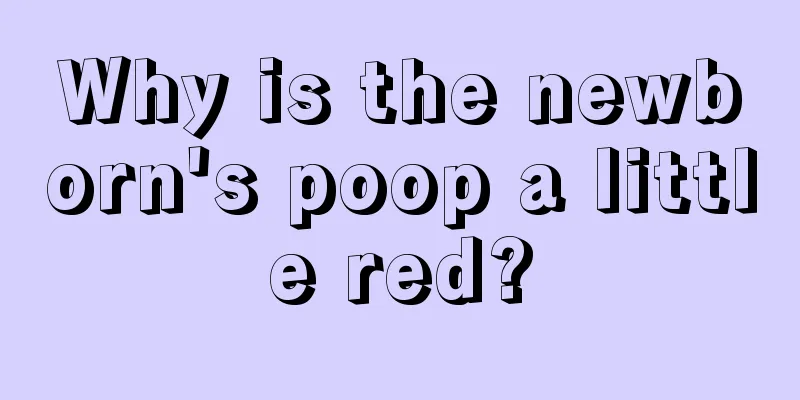What medicine to use for hand, foot and mouth disease

|
When a baby is diagnosed with hand, foot and mouth disease, the parents are the most worried, because hand, foot and mouth disease will cause many small blisters to grow on the baby's limbs, and will also be accompanied by oral ulcers. When hand, foot and mouth disease develops to a serious level, the baby will not be able to bear it and will start crying. When treating hand, foot and mouth disease, relatively mild drugs should also be selected. So what drugs are used for hand, foot and mouth disease? Traditional Chinese medicine is the most effective treatment for hand, foot and mouth disease. It usually uses a combination of oral medication and oral ointments. Those without complications can be cured in about a week and have a good prognosis. Antiviral drugs can also be used for treatment. The child should rinse his/her mouth with warm water regularly; he/she should avoid eating cold, spicy or irritating food, and should not be given salty food, so as not to cause pain and refusal to eat; the food should be easily digestible, with light, soft and warm meals, and he/she should drink plenty of warm water; the child should have enough rest; the child's clothes should be kept clean to avoid rash infection. During the acute attack period, the hands, feet, and oral mucosa are covered with herpes or ulcers, causing pain, fever, irritability, red tongue, white or yellow tongue coating, purple fingerprints, or rapid pulse. The syndrome is caused by exogenous pathogenic virus, heat accumulation in the spleen and stomach, and tearful and steaming. The treatment should be clearing heat and purging the spleen, detoxifying and cooling the blood. The prescription is self-made Qingre Xiepi Drink. Drug composition: 10 grams each of honeysuckle, dandelion, and scutellaria, 9 grams of forsythia, 12 grams each of wild chrysanthemum, red peony root, and isatis indigotica, and 15 to 30 grams of gypsum. If there is high fever and wind, add antelope horn and cicada shell; if there is severe fever, add Daochi Powder; if there is constipation, add rhubarb, Rehmannia root and Coix seed; if there is yin deficiency, add Ophiopogon japonicus and Anemarrhena asphodeloides; if there is wind-heat invading the lungs, add mulberry leaves and bitter almonds. Take 1 dose daily, decocted in water and taken in 2 doses. What is hand, foot and mouth disease? Hand, foot and mouth disease is a common and mild but highly contagious infectious disease that can be caused by a variety of enteroviruses and is easily acquired by children under 4 years old. The disease occurs at the turn of summer and autumn, with September being the peak season. It can cause herpes on the hands, feet, mouth and other parts of the body. A small number of children may develop complications such as myocarditis, pulmonary edema, and aseptic meningoencephalitis. If the disease progresses rapidly in some seriously ill children, it may lead to death. At the same time, there are more than 20 types of enterovirus that can cause hand, foot and mouth disease, among which Coxsackievirus A group 16 and enterovirus 71 are the most common. Its incubation period is 3 to 5 days, with prodromal symptoms such as low fever, general malaise, and abdominal pain. Within 1 to 2 days, painful millet- to mung bean-sized blisters appear in the oral cavity, pharynx, soft palate, buccal mucosa, tongue, and gums. They are surrounded by a red halo and break down into small ulcers. Due to the pain, the patient often drools and refuses to eat. At the same time, rashes also appear on the hands and feet. An indefinite number of blisters appear on the dorsal sides of the hands and feet, the dorsal edges of the fingers (toes), around the nails, and on the palms and soles. In addition to the hands, feet and mouth, they can also be seen on the buttocks and near the anus, and occasionally on the trunk and limbs. They dry up and disappear after a few days, and the rash does not itch or cause pain. Some children may develop generalized papules and blisters, accompanied by aseptic meningitis, encephalitis, myocarditis, etc. |
<<: How many months can you eat teething biscuits?
>>: Is hand, foot and mouth disease easy to treat?
Recommend
What kind of quilt should a newborn baby cover in winter
In winter, the weather is very cold. Even if you ...
What to do if your one-year-old baby has bloating
For one-year-old babies, the digestive function o...
Urethral stenosis in infants
Urethral stenosis is a common disease among infan...
What's a good way to make babies love drinking water?
In fact, many people are more concerned about the...
What is missing when children are active?
As children grow up, they will be full of curiosi...
If your child's ears get inflamed, parents should remember these methods
The inside of a child's ear is relatively fra...
Causes of convulsions in children
Some people will experience convulsions inadverte...
What is the reason for baby sweating
Many children may sweat excessively when they sle...
3 month old baby snoring while sleeping
Three-month-old babies are relatively young, and ...
What is normal stool like for babies?
Usually parents always observe their children'...
What to do if your child has swollen abdominal lymph nodes
Some children have health problems, so they need ...
What are the small pimples on the sides of children’s faces?
Many parents will find that their children have s...
What time is best for children to go to bed at night?
Nowadays, many young parents are prone to late sl...
Why does my baby have a runny nose when crying?
Whenever the baby at home cries loudly, many moth...
Is it normal for a five-year-old to start losing teeth?
Generally, children start to change their teeth a...









